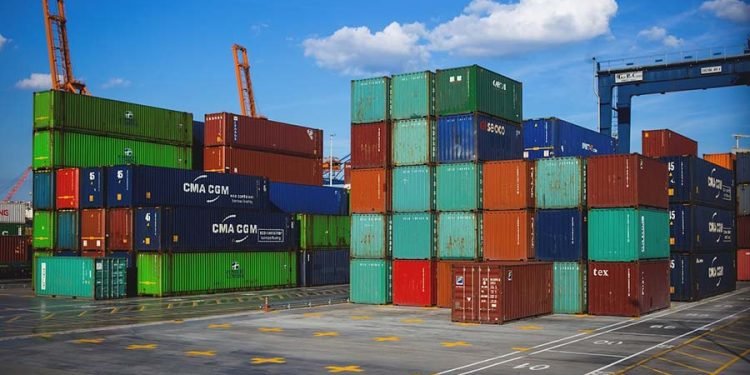If you are in the transportation industry, you know that managing a small trucking company can be extremely difficult. You have to hire drivers and obtain trucks and insurance. You must make sure that your trucking company is compliant with the rules of the Federal Motor Carriers Safety Administration. You must attain new clients and make sure that they are happy. Not only is all of this frustrating, but it can also be quite expensive.
When a truck leaves your facility, you want to make sure that It is loaded for maximum profitability. According to simplexgroup.net/freight-planning/, loading the truck correctly is not as easy as it sounds. You must use every inch of space and yet have enough room for a driver to comfortably remove boxes. You must load the truck in the reverse order that it will be unloaded. You must stack boxes in a way that will maximize space.
The route a truck takes can also affect the cost of a trip. There is much to consider when planning the lane you will take. There are some states that require extra permits for trucks to drive through them and there are others that charge a trucking tax.
A trucking insurance company may look at the routes your trucks go on and charge you more money for insurance if they feel that those roads are unsafe.
Good freight planning requires a knowledge of geometry, physics, and general trucking tax laws. This may sound rather difficult to you and it is. That is why there are professional freight planning companies that can help you.
Freight planners might not be cheap, but you can actually save quite a bit of money, time, and frustration when you hire one. There are several advantages to freight planning.
Deadhead Miles Are a Thing of the Past
When a truck is not loaded properly, it can end up costing you thousands of dollars a year. Freight planning will ensure that you earn as much money as you can on every trip.
When a truck is loaded and a lane is planned, all of the cargo in that truck will go to the same region of the country. If you are a small trucking company that is just starting out, you are unlikely to have that many packages that are going to the same region.
If you take a few shipments to a warehouse that is just several states away, your driver may end up coming back to your facility with an empty truck. This wastes time, resources, and money.
A freight planner will have relationships with several different trucking companies in your area. They will arrange for you to share space with those other trucking companies. When they do this, your trucks will never be empty. It will be mutually beneficial to both you and the other trucking company.
Most businesses lose money when they first start out and trucking companies are not an exception to this rule. You will lose far less money when you are first starting out if you have full loads.
You Won’t Need as Many Employees
Although freight planners might be very expensive, they will save you money in the long run. Not only will they maximize your hauls, but a better-organized loading system will mean that you will need fewer employees for a few more hours each day.
They Will Plan Your Lanes
In addition to helping you load your trucks and acquire partners to work with, a freight planning company can help you make a strategy for getting from one place to another. Really good lane planning takes research and knowledge about the trucking industry. When a person plans a lane, they will have to have knowledge of trucking laws across the nation.
They must know which states require extra permits and how much those permits will cost. If a state requires you to get a permit simply to drive through it, it may be more beneficial to take a longer route. For example, if you are carrying products from California to Washington, you might think the fastest and cheapest way to get there would be to drive through Oregon.
Oregon is actually one of the most expensive states to drive through. They require permits for all vehicles weighing over 8,000 lbs. Those permits do not last very long either.
A freight planner will figure out how much gas you will need to get from point A to Point B using several different routes. They will then figure out how many permits you will need to get from place to place and what these permits will cost. They will also look at the cost of fuel in each state and what the state’s tax rates are.
Trucking companies can write off the cost of meals and incidentals. They are given a per diem of $69 a day. That may sound like a lot of money for a day’s worth of food. However, you don’t get the money back until you do your taxes. A planner will take your daily expenses into consideration when planning the routes.
It Makes You Look Better to Your Clients
When businesses look around for the perfect trucking company to transport their cargo, they look for a stable company that has good references and plenty of insurance. They also want to make sure that you have hired top-quality drivers.
Having a freight planner is a major selling point to most companies. If you have a freight planner, they know that their packages will be handled with the best of care. They know that you are doing everything possible to save them money and get their product where it is going in a timely and efficient fashion.
Freight planning will also help you to retain the customers you currently have. If a delivery goes especially well, your clients will be thrilled. They will hire you again and they will tell their friends about you.
Check Out Potential Clients
Before you take a load across the country for a client, you want to make sure that the client can pay. A freight planner will run the credit of all your prospective clients and let you know which ones will be able to pay their bills. Having solvent clients is critical to your business’ success.
Make a Plan for Emergencies
There are many different kinds of emergencies that come up on the road. Your driver may have an accident, or the cargo may become damaged. In some cases, a driver may become sick and you will have to find a replacement driver in a hurry. A freight planner can help you come up with a contingency plan. If you have a protocol in place for dealing with emergencies, You will save yourself a lot of worries. You will also be able to get your client’s product where they are going in time no matter what.
Freight planning can take your new trucking company to the next level. Choose a planner who has years of experience in the trucking industry and can provide you with a dedicated account representative. When you work with one person consistently, they will get to know everything about your business and the people in it.












